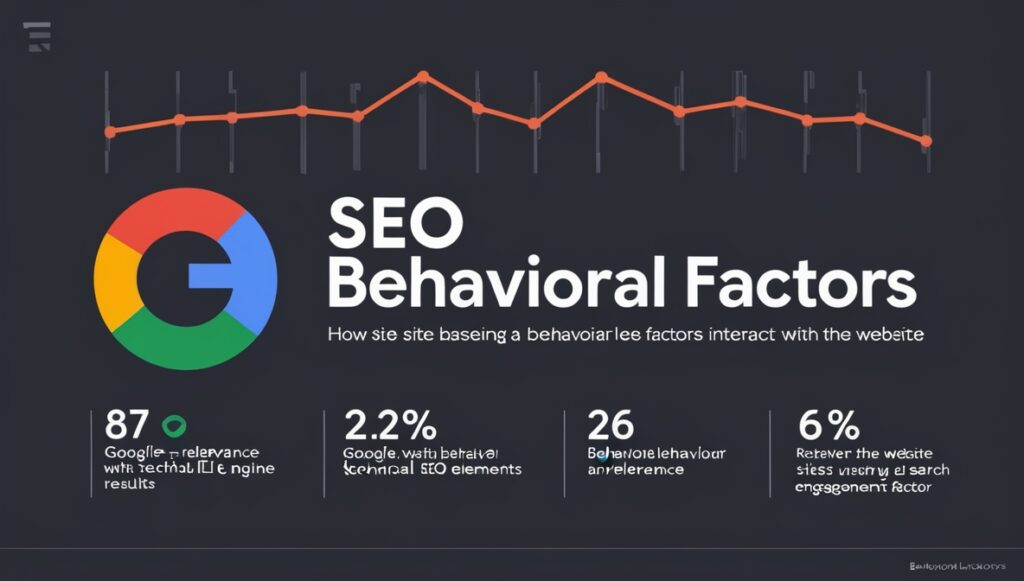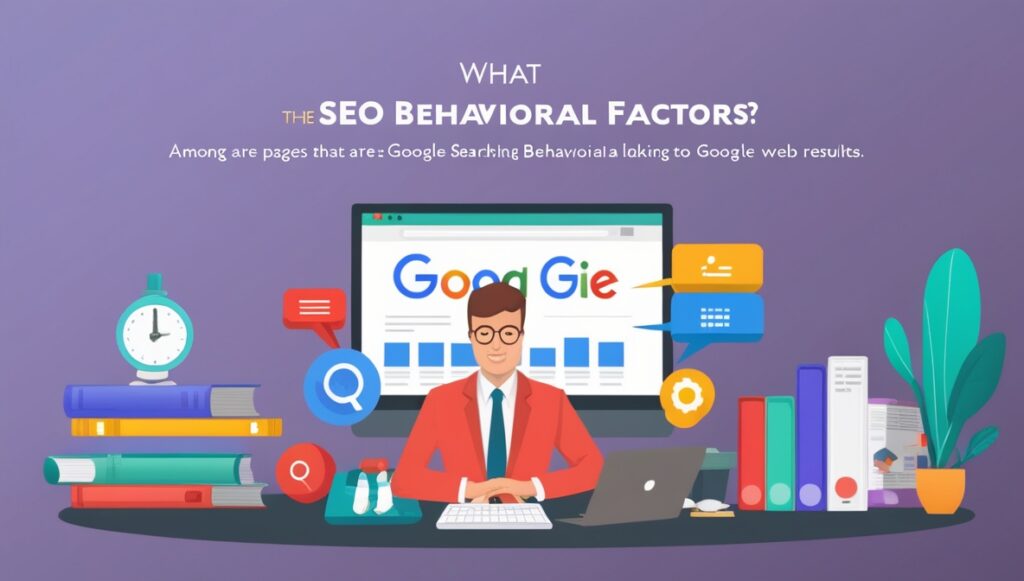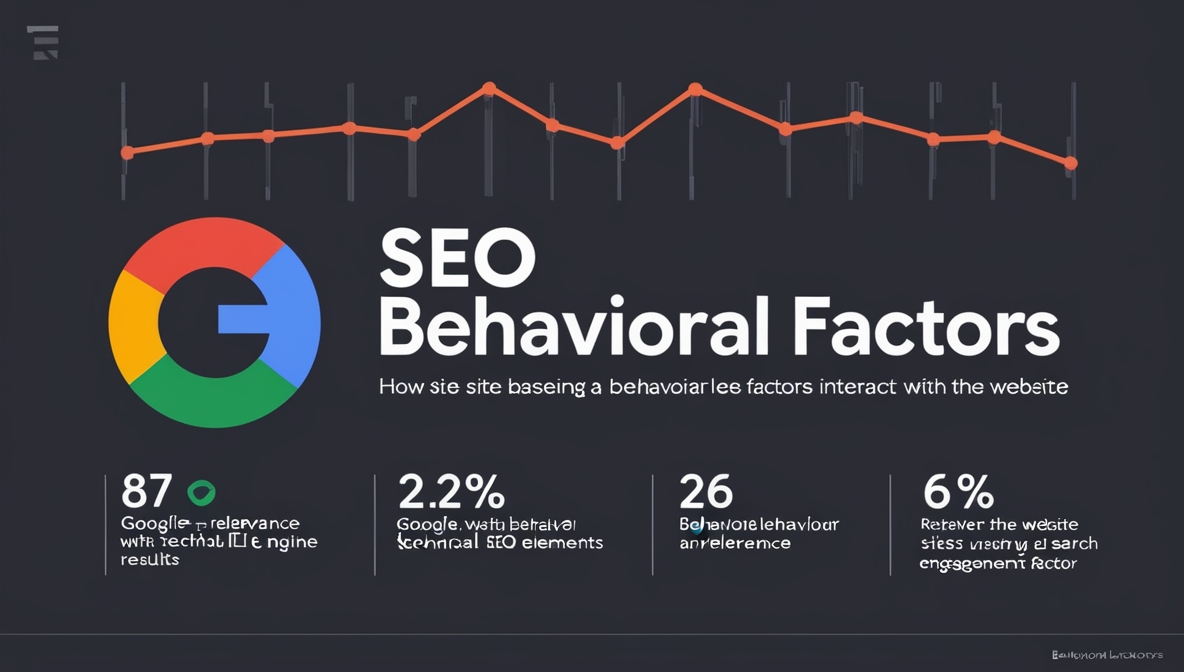
In the ever-evolving world of digital marketing, SEO (Search Engine Optimization) continues to be a critical strategy for businesses looking to enhance their online visibility. Among the many elements influencing SEO, behavioral factors have emerged as essential metrics that Google uses to evaluate and rank web pages. In this article, we will explore what SEO behavioral factors are, why they matter, and how businesses can optimize for them to improve their rankings in Google search results.
What Are SEO Behavioral Factors?

SEO behavioral factors are metrics that reflect how users interact with a website. These indicators provide insights into user preferences and can significantly influence a site’s ranking in search engine results. Google’s algorithms analyze these behavioral factors to determine the relevance and quality of a site based on user engagement rather than just technical SEO elements.
Key SEO Behavioral Factors Include:
- User Behavior Metrics: Data on how users interact with a site, including time on site and bounce rate.
- Content Quality: The relevance, depth, and value of the content provided on a website.
- Backlinks: Incoming links from other websites, which are essential for SEO authority and ranking.
Understanding these factors is crucial for any digital marketing strategy. Let’s delve deeper into each of these components to understand their impact on SEO.
The Importance of User Behavior Metrics
User behavior metrics offer tangible insights into how visitors interact with a website. Google places high importance on these metrics as they provide signals about the user experience (UX) on a given page.
Key User Behavior Metrics:
- Time on Site: This metric indicates how long users spend on your website. A longer time spent on the site often signifies that users find your content valuable and engaging, which can lead to higher rankings in search results.
- Bounce Rate: This is the percentage of visitors who leave the site after viewing only one page. A high bounce rate may suggest that the landing page does not meet user expectations, while a lower bounce rate can imply effective content that encourages users to explore further.
- Pages per Session: This metric refers to the average number of pages viewed during a single session. Higher pages per session usually indicate that users are engaging with your content and finding it helpful.
Why Are User Behavior Metrics Important?

Incorporating user behavior metrics into your SEO strategy helps identify strengths and weaknesses in your site’s performance. By analyzing these metrics regularly, businesses can make informed decisions about content creation and website optimization. For example, if the bounce rate on a specific page is high, it may be time to revise the content to better align with user expectations.
The Role of Content Quality in SEO
When it comes to SEO, content has always been king, and its quality plays a pivotal role in how Google ranks web pages. High-quality content not only attracts users but also keeps them engaged, directly influencing behavioral factors.
What Constitutes High-Quality Content?
- Relevance: Content should match the search intent of users. Writing tailored, specific articles that answer user queries is essential.
- Depth: Comprehensive content that covers a topic from multiple angles tends to perform better. This includes providing data, examples, and varied perspectives, which can encourage users to spend more time on your site.
- Value: Content must offer something valuable to the audience, whether it’s information, insight, or entertainment. This ensures that users find your website not just a source of information but a useful resource.
Content Quality and Google Rankings
Google regularly updates its algorithms to prioritize high-quality content in search results. Sites that fail to meet quality expectations may suffer in rankings. It’s essential to have a content strategy that focuses on delivering high-quality, informative, and engaging material.
The Impact of Backlinks on SEO
Backlinks, or inbound links from other websites, remain a critical factor in SEO. They are essentially votes of confidence from one site to another and play a significant role in establishing a site’s authority.
Why Are Backlinks Important?
- Authority: Backlinks from reputable sites indicate that your content is trusted and authoritative, significantly boosting your rankings on Google.
- Referral Traffic: Backlinks can drive traffic directly to your website from other domains, enhancing your audience reach.
- Indexing: Google uses links to discover new pages. Quality backlinks can help search engines find and index your content more effectively.
Strategies for Optimizing for SEO Behavioral Factors
To leverage SEO behavioral factors effectively, businesses should implement various strategies that enhance user engagement and satisfaction.
1. Improve Website Usability
A well-designed, easy-to-navigate website encourages users to explore and interact with your content. Ensure that your layout is intuitive, your load times are swift, and your site is mobile-friendly. These elements play a significant role in lowering bounce rates and increasing time on site.
2. Focus on Producing High-Quality Content
Develop a content strategy that prioritizes quality over quantity. Use comprehensive research to create detailed articles that provide real value to your audience. Utilizing SEO tools to gather insights on trending topics and relevant keywords will aid in creating valuable content.
3. Monitor and Analyze User Behavior
Use tools like Google Analytics and similar platforms to track user behavior metrics. Regularly analyzing this data will help you understand which elements of your site are performing well and which ones need improvement. Adjust your strategy based on these findings to enhance user experience continually.
4. Build a Strong Backlink Profile
Focus on creating high-quality backlinks by engaging with reputable sites in your industry. Guest blogging, content partnerships, and utilizing PR strategies can help establish connections that lead to valuable backlinks.
Conclusion

SEO behavioral factors such as user behavior metrics, content quality, and backlinks are critical components that Google considers when ranking websites. These factors not only influence search rankings but also play a significant role in shaping the user experience.
At Dust Digital Marketing Ltd., we understand the importance of optimizing these behavioral factors to enhance your online presence. Our team of experienced SEO professionals is dedicated to refining your website’s strategy to attract, engage, and convert your target audience successfully.
If you’re looking to improve your SEO performance with a focus on behavioral factors, visit our website at Dust Digital Marketing Ltd. and learn more about our comprehensive SEO services.
By optimizing for SEO behavioral factors, businesses can create a more satisfying user experience while achieving higher search rankings. Start your journey towards effective SEO today!

